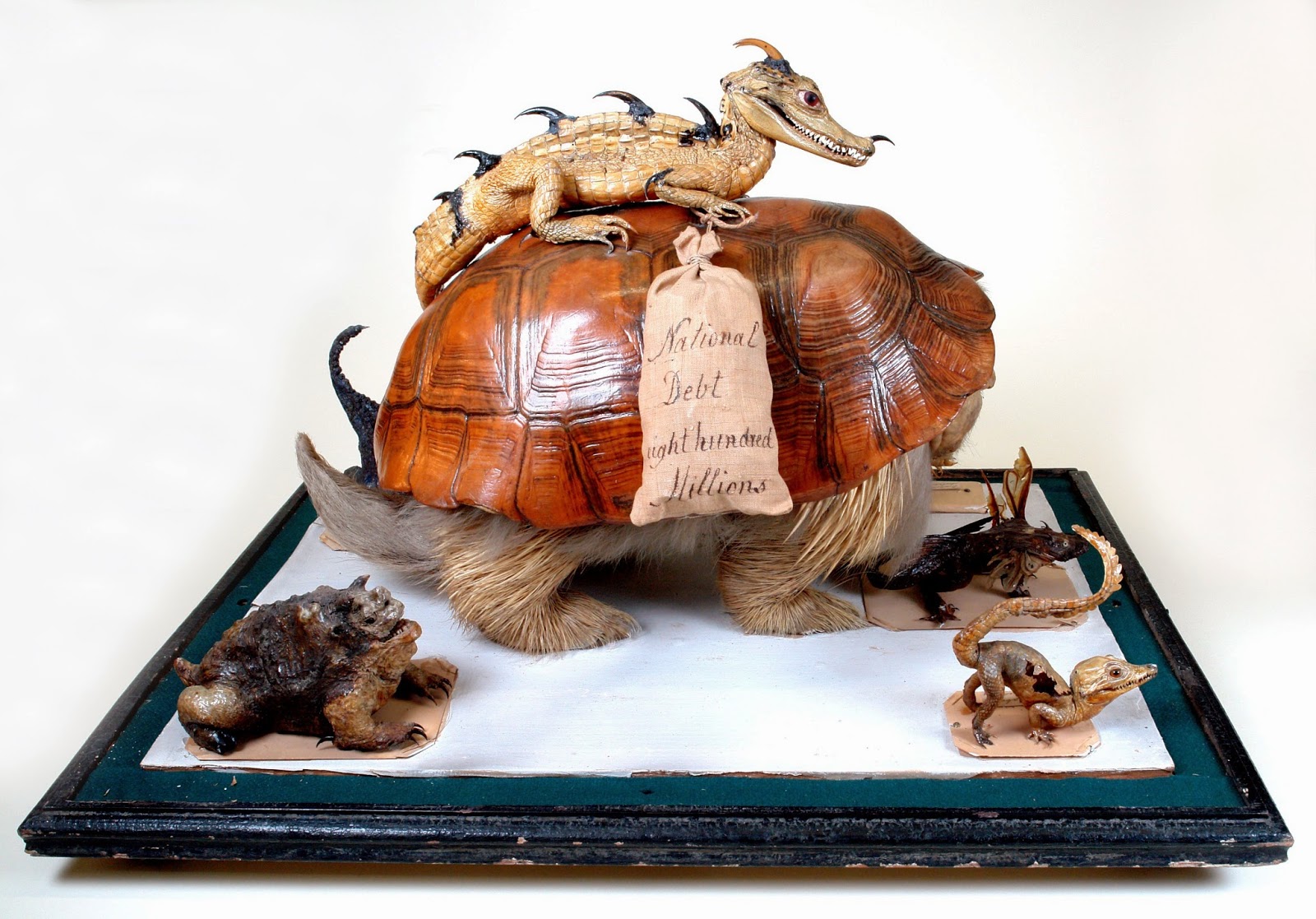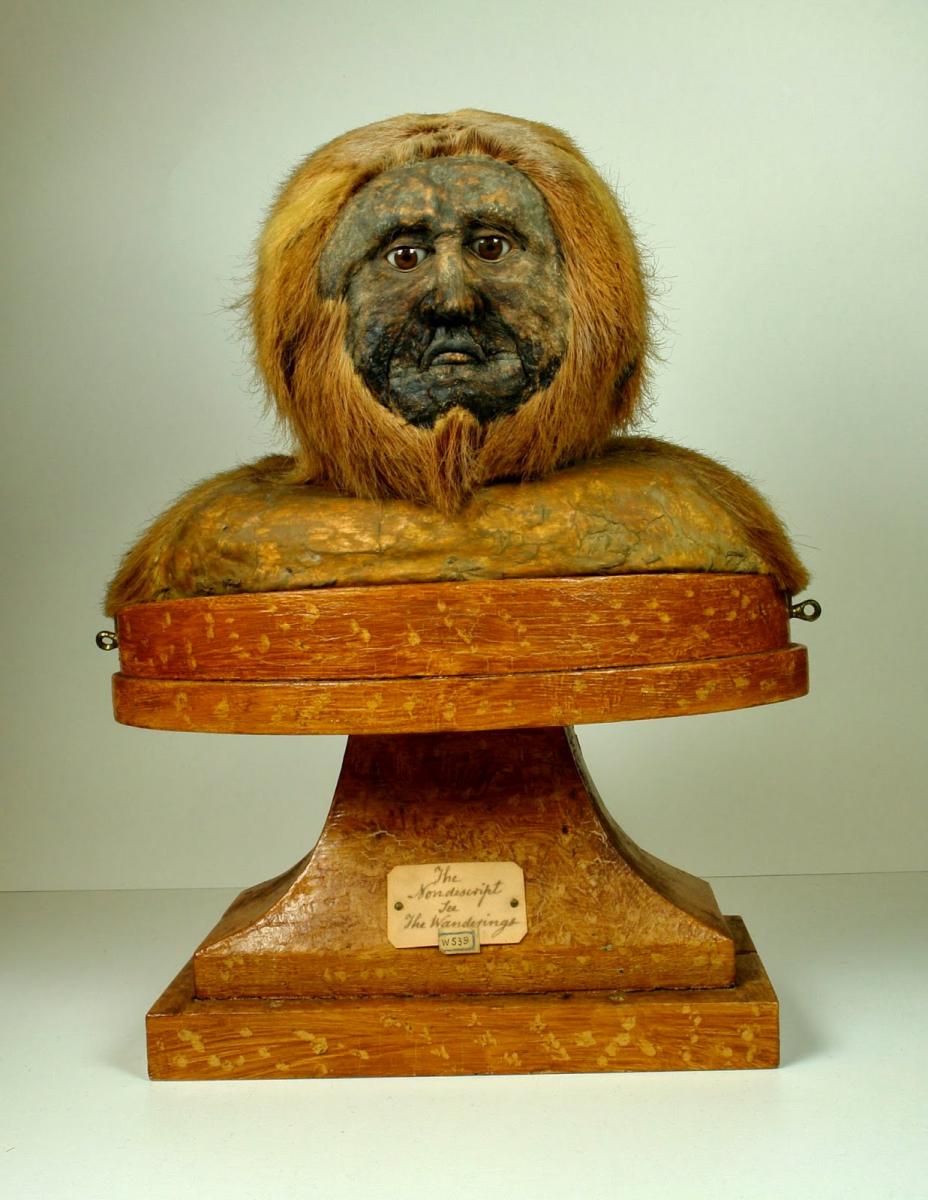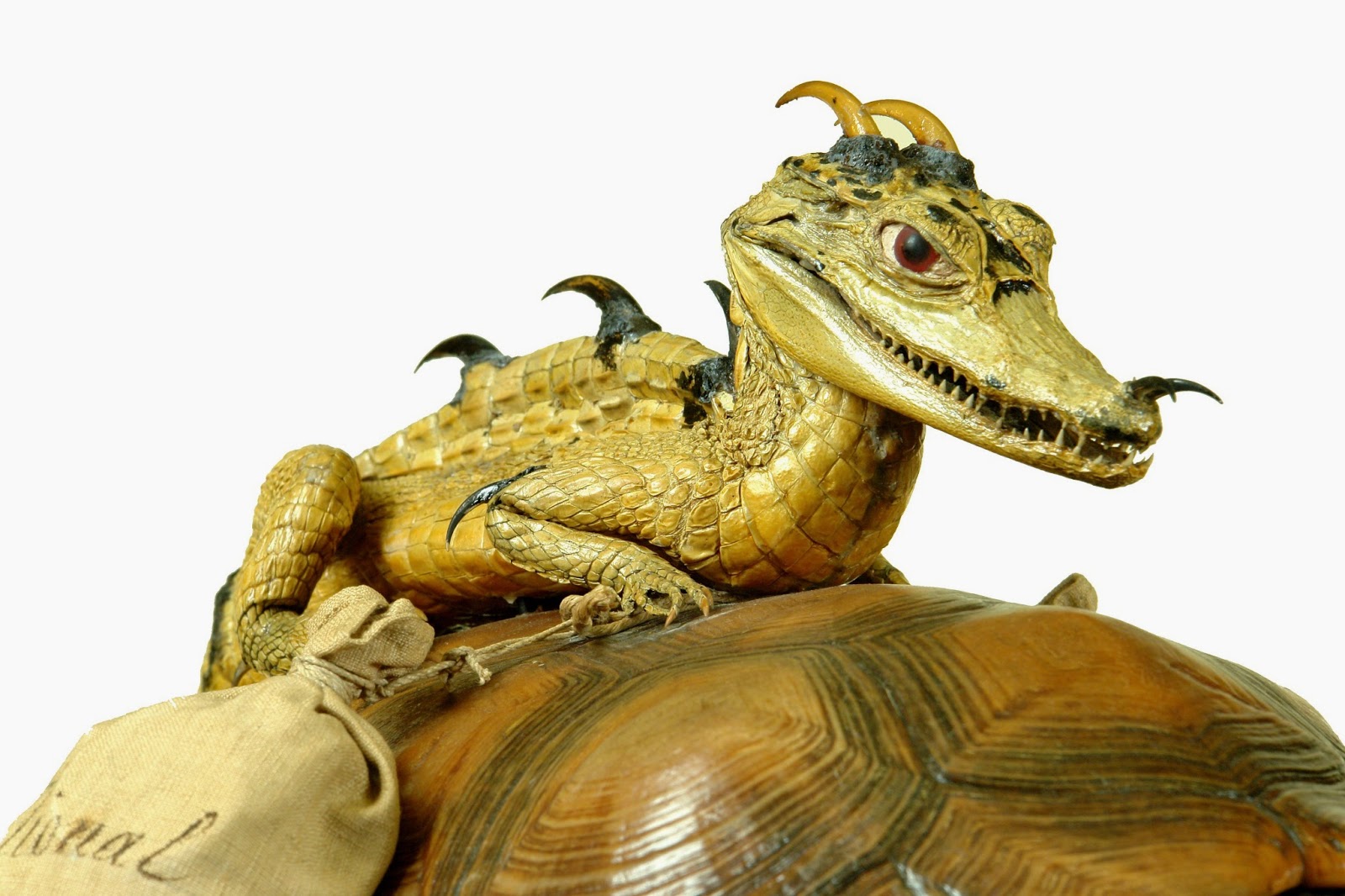Callout for Artists’ Proposals – Contemporary Visual Art & Sculpture for Horbury , West Yorkshire
Deadline: 17/03/2019City: Horbury, Wakefield | Region: West Yorkshire | Country: United Kingdom | David Gilbert
Paid opportunity
We are seeking proposals from artists at any stage of their career to create new work (or possibly redisplay existing work) for a curated programme of temporary and ephemeral commissions in public places in Horbury during the Summer of 2019, planned as a partner event to the upcoming Yorkshire Sculpture International which takes place from June - September. We will be applying to ACE for Project Funding to stage a series of artistic encounters around the town, in public buildings and the public realm, a promenade of contemporary art throughout the village in July 2019. We will also separately create a parade in May as part of a Summer of events, as well as a programme of exhibitions in the Red Box Gallery.
Cluntergate Centre (https://cluntergate.org.uk) is a newly refurbished community centre in the village. Clunter, which gives the street and centre its name, is an English dialect word meaning “to make a clumping or clattering noise”, as the road was formerly cobbled. Cluntergate will lead on the project, together with independent curator David Gilbert (www.davidgilbert.org.uk). David was Freelance Programme Producer for The Art House until recently, and works with artists and organisations on exhibitions and commissions throughout the Midlands, North West and Yorkshire.
What are we looking for? Charles Waterton.
1. Thematically we are looking for proposals for exciting site-specific work which deals directly or indirectly with the legendary naturalist Charles Waterton (1782 – 1865), one of Wakefield’s most famous sons.
Waterton was a pioneering naturalist, a Victorian eco-warrior, explorer and Yorkshireman, and inspiration to David Attenborough and Charles Darwin. He was the first naturalist to establish a sanctuary for wild birds; at great cost he enclosed his 259-acre estate, Walton Hall, in the 1820's, building a 3-mile long stone wall enclosing what became the world's first nature reserve.
To encourage birdlife he planted trees on his estate in Wakefield, and hollow tree trunks and branches were left for nesting birds like barn owls. Artificial nest boxes were built for owls, sand martins, jackdaws and starlings. Walton Hall had originally been moated, but Waterton's father enlarged this in 1790 to form a lake and it soon became a safe haven for all kinds of waterfowl.
Over a thirty-year period Waterton recorded 119 species of bird in the park including rarities like peregrine, hobby, merlin and cormorant. In 1842 he introduced the first little owls to Britain from Italy. Unfortunately, they only lived a few years and failed to breed. But he had more success with his favourite bird, the heron. He encouraged this 'persecuted wader' to shelter in the Park where over 40 pairs bred annually.
An agile athlete, he climbed trees almost to the day he died, mainly for observation purposes but partly for the enjoyment of it. Waterton once climbed to the top of St. Peter's in Rome and left his gloves on the lightning-rod as a token of his visit. He was an intrepid traveler, accomplished taxidermist, biologist and a devoted observer. He believed sensitive fieldwork was the only true way to learn about science and nature.
A generation of British schoolchildren grew up fascinated by his account, in his book ‘Wanderings in South America’, of riding a large Cayman (a South American Crocodile), and were awed by his description of his failure to be bitten by vampire bats in Guyana, though he left his toe deliberately exposed from his hammock for just this purpose night after night.
Waterton was a true eccentric; as a Roman Catholic his religious beliefs already separated him from mainstream British society and his idiosyncratic behavior - like using a wooden block for a pillow, walking barefoot in the park and reading Latin poetry in tree tops - only added to his reputation.
Wakefield Museum is now home to Waterton’s collection of preserved animals – some of which are made up from different animal parts mixed together into bizarre imaginary creatures. Waterton was an accomplished taxidermist, and invented a preservation technique which used mercury-based chemical to harden the animal skins rather than relying on traditional stuffing. As well as faithfully preserving specimens of all kinds of creatures, Waterton’s montages were often political satires: for example, ‘Martin Luther after his Fall’, ‘John Bull and the National Debt’, and the famous ‘Nondescript’, which was rumoured to be a South American man that Waterton had shot, and that he bribed customs officials to look the other way so he could bring the man’s head into the country. It is alternatively thought to be a hoax designed to fool fellow naturalists, formed from the rear end of a monkey moulded into a human face, possibly mocking some other naturalist of Waterton’s day. Wakefield Museum’s displays include Waterton’s exotic birds, monkeys, a snake, anteater and sloth as well as the Cayman crocodile which he rode in South America and some of his satirical taxidermy.
We are interested in site-responsive, site-specific and context-specific work placed around Horbury’s buildings and public spaces, inspired by Waterton and his exploits. Work can be in any form or medium, but should be temporary or ephemeral, though we are also interested in work which leaves a trace of some kind. We are interested in public engagement and participation as part of the creation of the work, but we are looking for contemporary artworks, rather than community art projects.
As well as Charles Waterton and his remarkable life, we are interested in the unexpected encounter with art, in architecture, in psychogeography, Situationist strategies, the dérive, in destabilising preconceptions of site and meaning, in intervention, in discovery, surprise, awe and humour, in cartography, maps and charts, in interactivity, and in friction rather than rapprochement.
2. We are also offering a specific commission for the Red Box Gallery, a former telephone box. All work commissioned for the Red Box must be created with the participation of a Horbury organisation, institution or enterprise so all applications for this should specify who you want to work with as well as what you want to do in response to the Waterton theme.
A bit about Horbury:
Horbury is a village in Wakefield District, only three miles from Wakefield City Centre. Wakefield District has many great arts venues and a vibrant arts scene, with The Hepworth, Yorkshire Sculpture Park, The Art House, the Wakefield Art Walk, the upcoming Yorkshire Sculpture International as well as theatre, music and much more. It has possibly the smallest gallery in the UK, the Red Box Gallery, which is a former phone box, and several bird sculptures by Bruce Williams forming the Horbury Aviary (both projects set up by Graham Roberts as part of ‘The Good of Small Things’),.
Here’s what the village website says about Horbury,
“Historically there are many good reasons to visit Horbury, all of them are good and some of them you may even find a little surprising.
Recorded in the Domesday survey as “Orberie.” Horbury’s fascinating architectural features include a number of notable medieval and Georgian buildings interspersed with an interesting mixture of Victorian properties.
The medieval remains include timber-framed Horbury Hall in Church Street, and Nether Hall in Cluntergate now the Shepherd’s Arms. Tithe Barn Street bears signs of the former barn, an old lock-up or “kidcote” originally used as a prison with adjacent former 18th century Sunday School.
Notable from the Georgian period is eighteenth century Sunroyd House now known at Carr Lodge Mansion and awaiting exciting re-development.
When the Victorian House of Mercy opened in 1858 it was the first religious community to be founded in the north of England since the Reformation. Its purpose was to rescue fallen women from sin and destruction. As the huge complex developed it embraced a convent, chapel, hospital and retreat for the clergy. Subsequently re-named St Peter’s Convent it opened a private preparatory school dedicated to St. Hilda in 1949 and still flourishes today.
Famous sons connected with the township include: John Carr (1723-1807), the renowned Georgian architect and a former Lord Mayor of York who was born in the town and funded the church of St Peter & St Leonard. This also serves as his mausoleum which may be visited on special occasions.
The contemporary novelist Stan Barstow, who wrote “A Kind of Loving,” was born in Horbury and his novel “Joby” was filmed in the town. A famous Victorian “visitor” was Reverend Sabine Baring-Gould (1834-1924) who married a local girl and wrote the words of the famous hymn, “Onward Christian Soldiers.” Other names associated with music include David Turton (1768-1846) and William Baines (1899-1922).
The nearby National Coal Mining Museum commemorates our coal mining heritage and other former dominant industries include Richard Sutcliffe, Mining Engineers Charles Roberts, Waggon Repairs, Slazenger International Sports Equipment, Redicut International, Leather Products and Richard Poppleton Knitting Wools.
The town also has a myriad of organisations including the historic Common Lands Trust inaugurated by Sir Gervase Clifton in 1653, the Daniel Gaskell Committee, Civic Society, Heritage Trust, Horbury Town Centre Partnership, Horbury Craft & Street Fayre Committee and Horbury & District Historical Society.
Horbury is a small town with a difference. We hope you will visit and enjoy its many treasures.”
Find out more by downloading the Town Trail leaflet.
Contact the curator
You must have an account to send a message to the curator of this opportunity. Registering only takes a few moments. Once registered you'll be able to keep track of all of your submissions and get updates on upcoming opportunities.
Already have an account? You must log in to send this curator a message.
Get the latest CuratorSpace news, updates about new opportunities, upcoming deadlines, and art-related promotions.
We are pleased to announce our next Special Edition + Online Exhibition, inviting artists... Water & Metaphors/ Special Edition
We are pleased to announce our next Special Edition, 'Water & Metaphors.' Submit work... The Light Frame Gallery | Open Call for Social Photo Essays
As we begin the launch of The Light Frame Gallery, we are seeking photographers whose practice...




